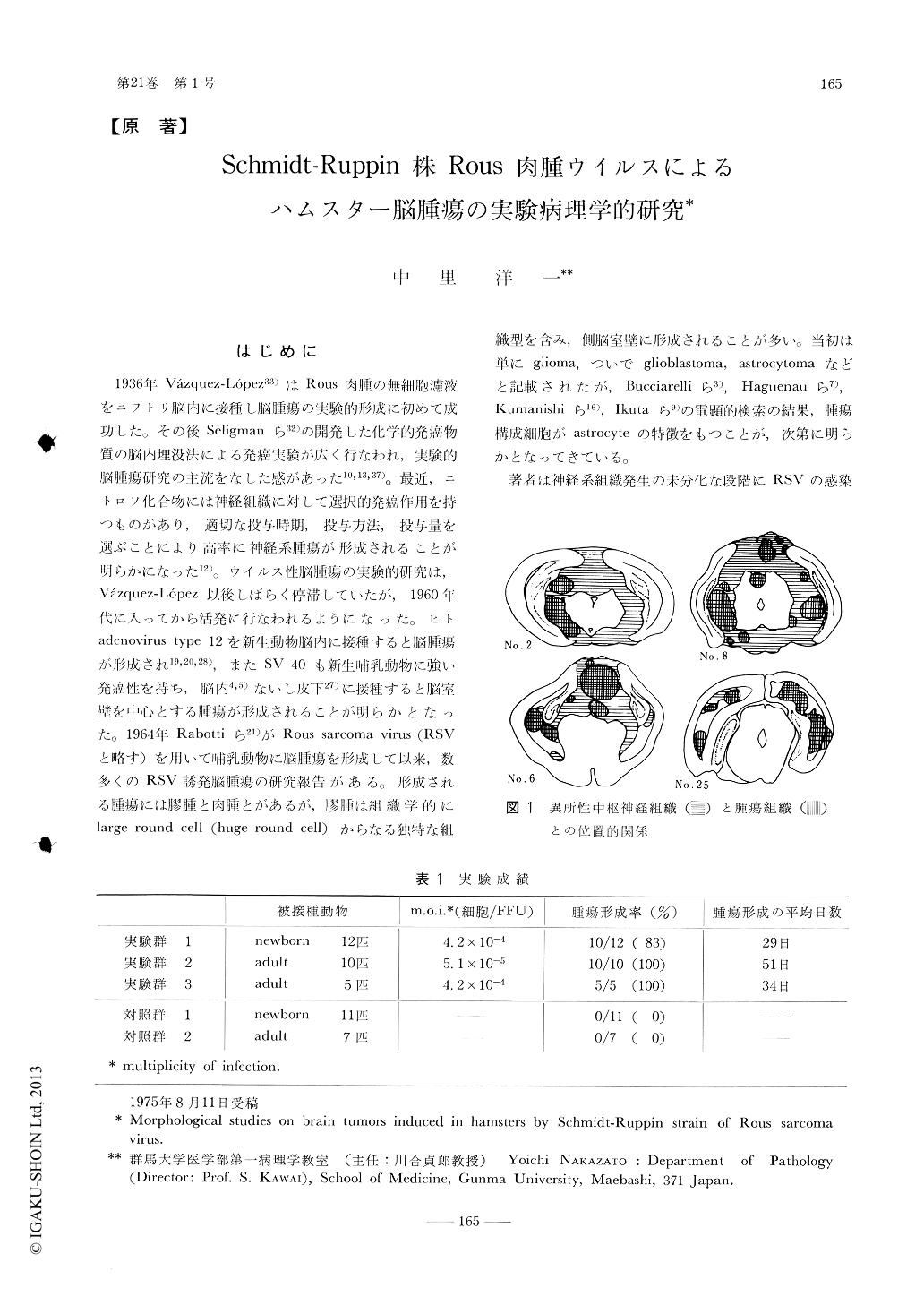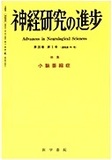Japanese
English
- 有料閲覧
- Abstract 文献概要
- 1ページ目 Look Inside
はじめに
1936年Vazquez. López33)はRous肉腫の無細胞濾液をニワトリ脳内に接種し脳腫瘍の実験的形成に初めて成功した。その後Seligmanら32)の開発した化学的発癌物質の脳内埋没法による発癌実験が広く行なわれ,実験的脳腫瘍研究の主流をなした感があった10,13,37)。最近,ニトロソ化合物には神経組織に対して選択的発癌作用を持つものがあり,適切な投与時期,投与方法,投与量を選ぶことにより高率に神経系腫瘍が形成されることが明らかになった12)。ウイルス性脳腫瘍の実験的研究は,Vázquez-López以後しぼらく停滞していたが,1960年代に入ってから活発に行なわれるようになった。ヒトadenovirus type 12を新生動物脳内に接種すると脳腫瘍が形成され19,20,28),またSV 40も新生哺乳動物に強い発癌性を持ち,脳内4,5)ないし皮下27)に接種すると脳室壁を中心とする腫瘍が形成されることが明らかとなった。1964年Rabottiら21)がRous sarcoma virus(RSVと略す)を用いて哺乳動物に脳腫瘍を形成して以来,数多くのRSV誘発脳腫瘍の研究報告がある。
Brain tumors were induced in hamsters by intracerebral inoculation of SR-RSV (Schmidt-Ruppin strain of Rous sarcoma virus)-infected embryonic brain cells and were morphologically studied. Embryo brains removed aseptically from 12-day old pregnant hamsters of AP-golden strain were minced and trypsinized to suspend the cells. They were centrifuged, resuspended in the RSV fluid containing 5.8×103 or 5×104 focus forming units per ml at 37℃ for 45 minutes, washed and finally adjusted to the concentration of 2×108 cells per ml.

Copyright © 1977, Igaku-Shoin Ltd. All rights reserved.


